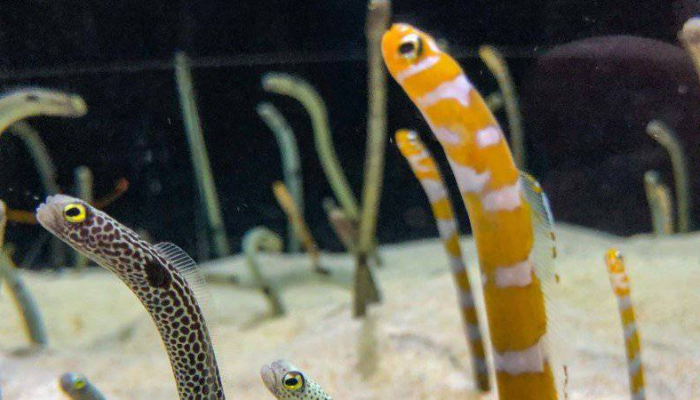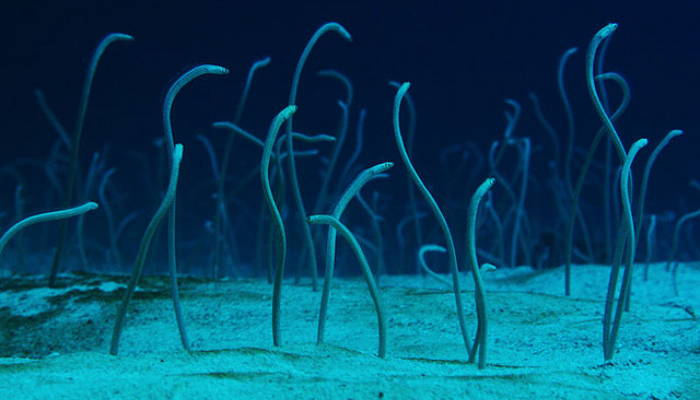
When diving into the diverse world of underwater creatures, one name that often sparks curiosity is the garden eel. These captivating creatures are frequently spotted in the vibrant ecosystems of the ocean, but a common question that arises is: are garden eels fresh or saltwater? If you’re an aquarium enthusiast or simply intrigued by marine life, you’ll want to explore the fascinating characteristics and natural habitat of garden eels. In this article, we will uncover where garden eels thrive, their remarkable behaviors, and why they are uniquely suited for saltwater environments.
What Are Garden Eels?
Garden eels are a type of eel species found predominantly in the shallow,are garden eel fresh or saltwater sandy habitats of the ocean floor. They are known for their ability to bury themselves into the sand with only their heads visible above the surface. These eels belong to the family Heterocongridae and are typically small, measuring around 12 inches to 3 feet in length, depending on the species.
These eels form what are known as “garden” colonies, which is a sight to behold. When a garden eel colony is observed from a distance, it looks like a miniature forest of eel heads popping out from the ocean’s sandy bottom. Though their appearance is similar to that of regular eels, garden eels are distinguished by their slender bodies and the way they interact with their environment, often swaying in the current.
Are Garden Eels Fresh or Saltwater?
Garden eels are exclusively saltwater creatures,are garden eel fresh or saltwater making them entirely dependent on oceanic ecosystems for survival. They are native to tropical and subtropical regions, often found in the sandy areas of coral reefs and shallow seabeds. These eels thrive in stable, saltwater environments where they can easily burrow into the sand and feed off planktonic organisms.
Unlike their freshwater cousins, garden eels cannot survive in freshwater habitats. Saltwater provides the ideal conditions for their growth and reproduction, as they rely on the nutrients found in marine ecosystems. As their name suggests, they often look like “gardens” on the seafloor, with dozens or even hundreds of eels occupying the same patch of sand in a coordinated manner.
The Habitat and Behavior of Garden Eels
Garden eels prefer sandy or muddy seafloor environments in tropical or subtropical waters.are garden eel fresh or saltwater They are commonly found in areas such as the Indo-Pacific region, including parts of the Coral Triangle, the coasts of Japan, and even the Red Sea. These eels are usually seen at depths ranging from 10 to 70 meters, where the ocean floor is soft enough for them to dig their distinctive burrows.
What makes garden eels fascinating is their behavior. Unlike most other eels, they do not slither or swim around freely in search of food. Instead, they remain anchored in their sandy burrows, using their long, slender bodies to filter plankton and tiny organisms from the water. Garden eels also display a unique “swarming” behavior, where they remain clustered together, forming large colonies that resemble lush underwater gardens.
Additionally, these eels are highly social creatures. They interact with one another and rely on the presence of other garden eels to feel safe in their environments.are garden eel fresh or saltwater This social structure is one of the reasons why garden eel populations are often found in dense, communal colonies.
Garden Eels and Their Role in the Marine Ecosystem

Garden eels may appear delicate, but they play an essential role in maintaining the balance of their marine ecosystems. By feeding on plankton and organic matter suspended in the water, they help regulate populations of microscopic organisms. This,are garden eel fresh or saltwater in turn, affects the overall health of the ecosystem, providing a food source for larger marine creatures.
Their burrowing behavior also helps stabilize the sandy seafloor. The tunnels they create can alter the structure of the sediment, which influences the way water moves through the sand. This can enhance the filtration of nutrients and oxygen to other organisms that live on the seafloor. As a result, garden eels contribute to the overall biodiversity of their habitats by supporting various other marine life forms.
Why Are Garden Eels So Special?
What sets garden eels apart from other eels is not just their behavior or environment, but their stunning adaptability.are garden eel fresh or saltwater Their ability to survive and thrive in saltwater habitats, coupled with their fascinating communal structure, makes them one of the ocean’s more unusual yet critical species. Furthermore, their dependence on saltwater environments means they are susceptible to the changes brought about by climate change, making them an important indicator species for the health of marine ecosystems.
From an aquarium perspective, garden eels are a remarkable addition to saltwater tanks, although they require highly specialized care. Their need for ample space, consistent water conditions, and a fine sand substrate makes them challenging to keep in home aquariums, but their beauty and grace are undeniable.
Conclusion
In conclusion, garden eels are distinctly saltwater creatures that thrive in tropical and subtropical marine environments. They are not just fascinating to observe but also play an integral role in their ecosystems by filtering plankton and contributing to the structure of the seafloor.are garden eel fresh or saltwater While they may appear similar to other eel species, garden eels have unique behaviors, including their communal living and filtering habits, making them an important part of marine life. Understanding that garden eels are saltwater residents helps aquarium enthusiasts and marine biologists alike appreciate their delicate nature and importance to oceanic health.
FAQs:
- Are garden eels freshwater or saltwater?
Garden eels are saltwater creatures that thrive in tropical and subtropical marine environments are garden eel fresh or saltwater. - Where do garden eels live?
Garden eels are commonly found in the sandy seabeds of the Indo-Pacific region, including the Coral Triangle, Japan, and the Red Sea. - What do garden eels eat?
Garden eels feed primarily on plankton and tiny organisms suspended in the water.are garden eel fresh or saltwater They filter these from the water using their long bodies. - Can garden eels live in an aquarium?
While it is possible to keep garden eels in a saltwater aquarium, they require very specific conditions, including fine sand substrates and ample space. - How do garden eels filter food?
Garden eels filter food by using their heads, which are positioned above the sand while their bodies are buried, to capture plankton from the water. - Are garden eels endangered?
While garden eels are not currently classified as endangered, their populations can be affected by environmental changes such as ocean pollution and habitat destruction. - How deep do garden eels live?
Garden eels typically live at depths ranging from 10 to 70 meters,are garden eel fresh or saltwater where the ocean floor is soft and sandy. - What is the lifespan of a garden eel?
Garden eels can live for several years, although their exact lifespan varies depending on environmental conditions. - Do garden eels interact with other marine creatures?
Yes, garden eels often coexist with other marine life forms, including fish, crustaceans, and other invertebrates, within their ecosystem. - What makes garden eels different from other eels?
Garden eels differ from other eels in their behavior and habitat, as they remain anchored in sandy burrows and live in large, social colonies,are garden eel fresh or saltwater unlike other eel species that are more solitary





